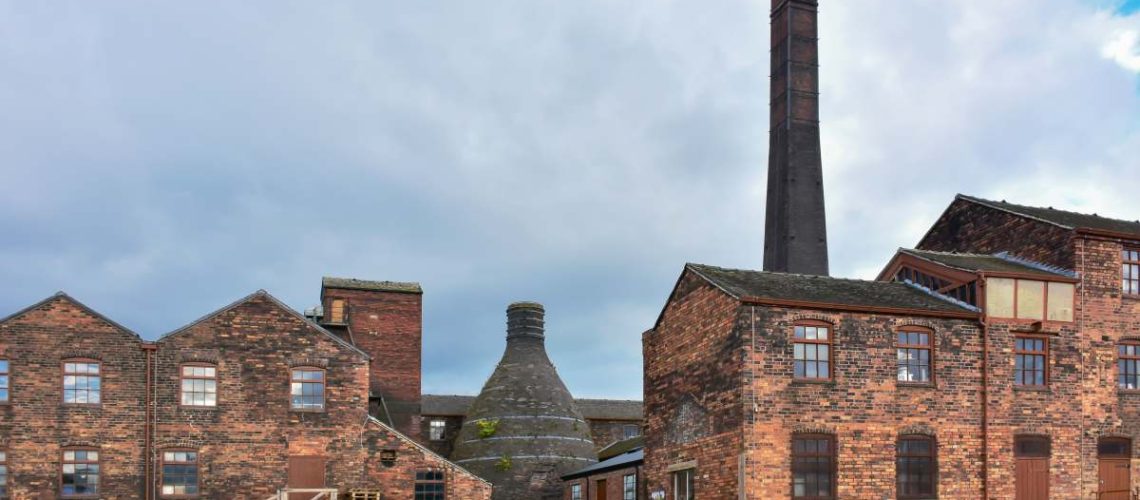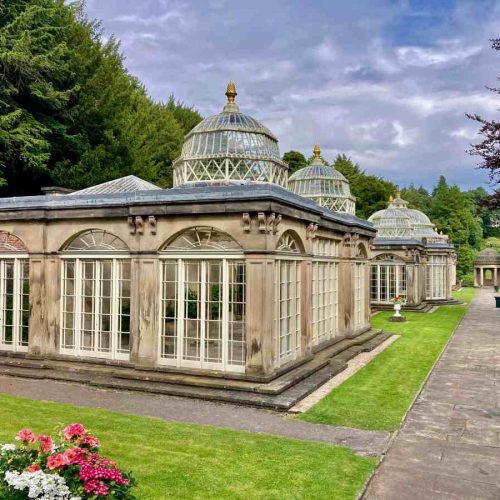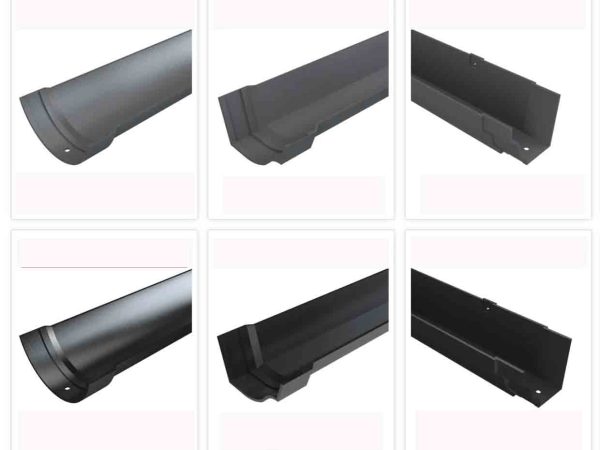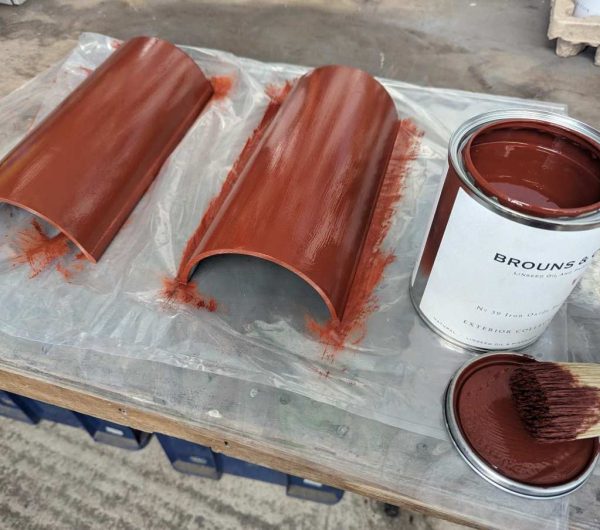


In the heart of England lies Staffordshire, a county steeped in history and architectural character. From the timber-framed cottages of market towns to the grand industrial-era civic buildings, Staffordshire’s landscape tells stories of craftsmanship, community, and innovation. These stories are written into the walls, roofs, and details of thousands of listed and period buildings—structures that require both reverence and responsibility to maintain.
At Tuscan Foundry Products, we’re proud to play a role in preserving these treasures, offering cast iron rainwater systems and architectural fittings that reflect the spirit of traditional British construction.
Caring for historic buildings in the 21st century involves a delicate balance. On the one hand, preserving aesthetic and historical integrity is necessary. Conversely, practical upgrades must address today’s environmental realities, like managing increased rainfall due to climate change.
Unfortunately, even minor alterations, such as switching guttering materials, can risk compromising a building’s historic appearance or violating listed building consent requirements. That’s why traditional materials—especially cast iron—are essential. Cast iron remains the gold standard for rainwater systems on listed and period properties; it is durable, beautiful, and historically authentic.
A listed building in the UK has been recognised for its special architectural or historic interest. There are three grades of listing:
• Grade I – Buildings of exceptional interest
• Grade II* – Significant buildings of more than special interest
• Grade II – Buildings of special interest
Most listed properties are Grade II and include homes, barns, shops, and civic structures—each contributing to the region’s unique visual and cultural identity. With listing comes protection. Any changes affecting a building’s character, including replacing rainwater goods or repainting exteriors, must be approached with care and the proper consent.
Staffordshire boasts a rich architectural legacy. Among the region’s most cherished buildings:
• Trentham Hall (Stoke-on-Trent): Once a grand country house, its remains and landscaped gardens speak to Victorian opulence.
• The Wedgwood Institute (Burslem): A decorative masterpiece of Victorian brickwork and a beacon of the county’s industrial past.
• Tamworth Castle: A Norman motte-and-bailey fortress with over 900 years of history, standing proudly as a Grade I structure.
• Alton Towers Conservatories: While the theme park is world-famous, the estate’s original features are Grade II* listed and preserved for their beauty and botanical heritage.

Caring for historic buildings in the 21st century involves a delicate balance. On the one hand, preserving aesthetic and historical integrity is necessary. Conversely, practical upgrades must address today’s environmental realities, like managing increased rainfall due to climate change.
Unfortunately, even minor alterations, such as switching guttering materials, can risk compromising a building’s historic appearance or violating listed building consent requirements. That’s why traditional materials—especially cast iron—are essential. Cast iron remains the gold standard for rainwater systems on listed and period properties; it is durable, beautiful, and historically authentic.

At Tuscan Foundry Products, we know that proper conservation means more than just preserving appearance—it means maintaining the legacy.
That’s why we offer cast iron gutters, pipes, and hopper heads in a range of traditional profiles like:
• Half-round
• Ogee
• Box
• Moulded and decorative profiles
These options allow property owners, architects, and conservation officers to match existing features or recreate styles with historical accuracy. Every detail matters—from the gentle curve of a radius gutter to the ornate finial of a bespoke hopper head.
And beyond aesthetics, cast iron offers unmatched durability. With proper care and traditional finishing methods—such as linseed oil painting—a cast iron system can protect a property for over a century.
Linseed oil paint is a time-honoured method for protecting cast iron components. Breathable, flexible, and naturally derived, this traditional finish allows moisture to escape while forming a resilient, weather-resistant barrier. It also ages gracefully, developing a patina that complements historic facades.
At Tuscan Foundry, we offer linseed oil paint finishing in various heritage tones, or we can match your desired RAL/BS palette. It’s conservation done with a conscience—honouring the past while protecting the future.
Shown here as a traditional red oxide primer finish.

Our work extends beyond supply—we’re a full-service partner for heritage and restoration projects across the UK.
Bespoke Cast Iron Solutions
We’re proud to reproduce and reimagine traditional patterns, including curved (radius) gutters, decorative pipes, and engraved hopper heads. From a 19th-century downpipe profile to a unique family crest, we craft bespoke elements that bring character to life.
Expert Site Surveys
Understanding your building is the first step to preserving it. Our advisors conduct detailed site visits and ground surveys, ensuring that every project starts with precision and respect for the building’s story.
Accurate Estimating
We provide clear, considered quotes that consider your building’s unique structure and requirements. Our team ensures budget alignment from single cottages to large-scale civic restorations without compromising heritage standards.
Generations of Experience
With roots dating back to 1893, we blend time-tested craftsmanship with modern efficiency. Whether working with architects, conservation officers, or homeowners, we’re committed to solutions that stand the test of time.
Preserving Staffordshire’s historic buildings is about more than bricks and mortar. It’s about memory, meaning, and community. It’s about protecting the stories we tell through our built environment—and ensuring they continue for generations to come.
At Tuscan Foundry Products, we are honoured to be part of that journey.
Let us help you protect your heritage, one bracket, one pipe, and one beautifully crafted detail at a time.

Cast iron is the traditional and conservation-approved choice for period properties in Staffordshire. Its historical accuracy, durability, and elegant appearance make it ideal for preserving the architectural integrity of listed buildings. With proper maintenance, cast iron systems can last over 100 years.
Yes. Any alterations to rainwater goods on a listed building—including like-for-like replacements—typically require listed building consent. These features contribute to a building’s character and must be treated with care under conservation regulations.
Tuscan Foundry offers traditional profiles including half-round, ogee, box, and moulded styles. We can also recreate bespoke or historic patterns to ensure consistency with the original design, especially important for Grade II and II* properties.
Due to climate change, rainfall has intensified. It’s essential to calculate flow rates based on roof area and rainfall intensity. Tuscan Foundry provides technical guidance and can recommend deeper profiles or additional outlets to accommodate higher volumes of water safely.
Linseed oil paint is breathable, eco-friendly, and historically appropriate. It protects against rust while allowing moisture to escape, which is vital for preserving both the cast iron and the structure of listed buildings. We offer a range of heritage tones or custom-matched finishes.
Yes, we conduct detailed site visits, aerial platform surveys, and ground assessments. These services ensure accurate measurements, condition reports, and conservation recommendations tailored to your specific building and its unique needs.
Hopper heads can be decorative and functional. Our bespoke designs can replicate historical details or feature initials, dates, and motifs that enhance the heritage value of your property. These handcrafted elements help maintain the building’s unique identity.